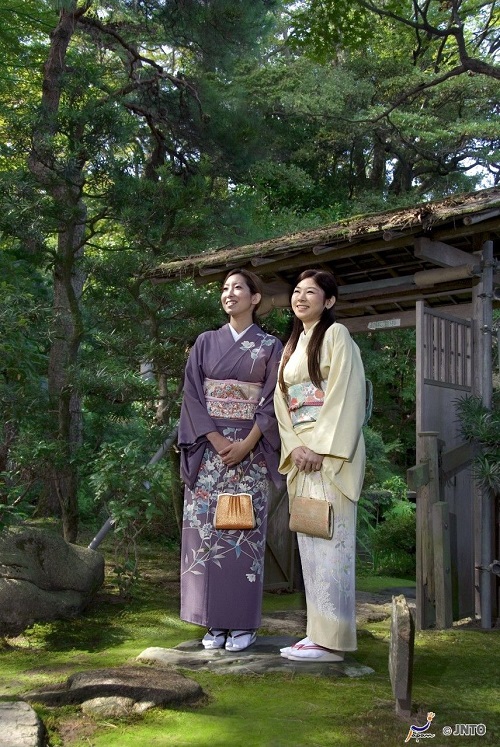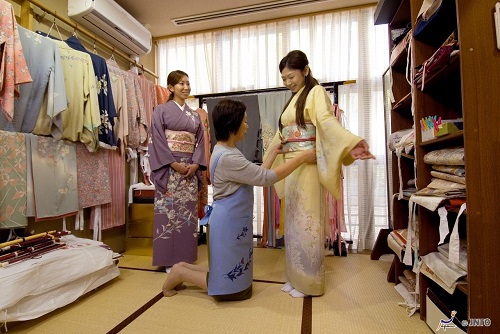Tokyo, Japan Jan. 24 Fri 3:19AM
The Art of Japanese Dress
What is kimono?
Kimono is the traditional wear of Japan. Usually made from silk, these garments are T-shaped robes with long sleeves and are wrapped around using an intricate sash called an obi.
In the past, Japanese wore kimono as daily wear, but in recent times, kimono are worn for special occasions.
There are different types of kimono worn by men and women. For men, a kimono called a hakama is worn. Women wear two types of kimono: a furisode, which is a colorful kimono with longer sleeves, and a homongi, which is usually more subdued in style and color.

I had a chance to participate in the one-day Furisode kimono experience with a kimono studio in Asakusa, a quaint Tokyo neighborhood with a traditional feel, and many temples and shrines that remind visitors of old Tokyo.
One day Furisode Kimono Experience
The staff from the kimono house met with me at 8:45 a.m. at Tawaramachi Station in Asakusa. We met early so that we could avoid the crowds and take some nice photos!
Even though it was hot on the day we went, I decided that I wanted to still wear a kimono made of silk instead of a lighter, summer version called yukata.
The kimono specialist prepared three kimono for me, as well as lots of different accessories for them.
Hair ornaments and accessories
I was also provided with garments to wear under the kimono. Kimono dressing is complicated and has many layers.
I decided after looking through all of the kimono that I liked red the best, so I went with the red kimono for my photoshoot.
How to Wear a Kimono:
-
Put on the inner wear. Small towels are used to pad around the waist area to improve the fit of the kimono. The kimono dressers also helped me put on the other undergarments.
-
Next, I put on the furisode, always wrapping left over the right first.
There comes the obi.
There are many ways the obi can be tied, and the process requires a lot of skill. Most people, even if they can put on the undergarments and the kimono, can’t finish putting on the kimono because they can’t tie the obi. Many Japanese people study the art of kimono dressing, and it can take a lifetime to master.
Finally, I picked the hair ornaments to complete my kimono dressing experience.
They were so pretty and I loved them all!
It took us ten minutes to walk from our kimono studio to Kaminarimon Shrine. One of the really great things about this kimono experience is that if you bring your own camera, you can take as many photos as you like in your kimono! If you decide to hire the professional photographer, it only costs 3,000 yen for 30 photos (less than $30 USD), all given to you on a DVD to make as many prints as you want!
When I went, the weather wasn’t so good, but we still got some beautiful shots of the kimono and the obi.

